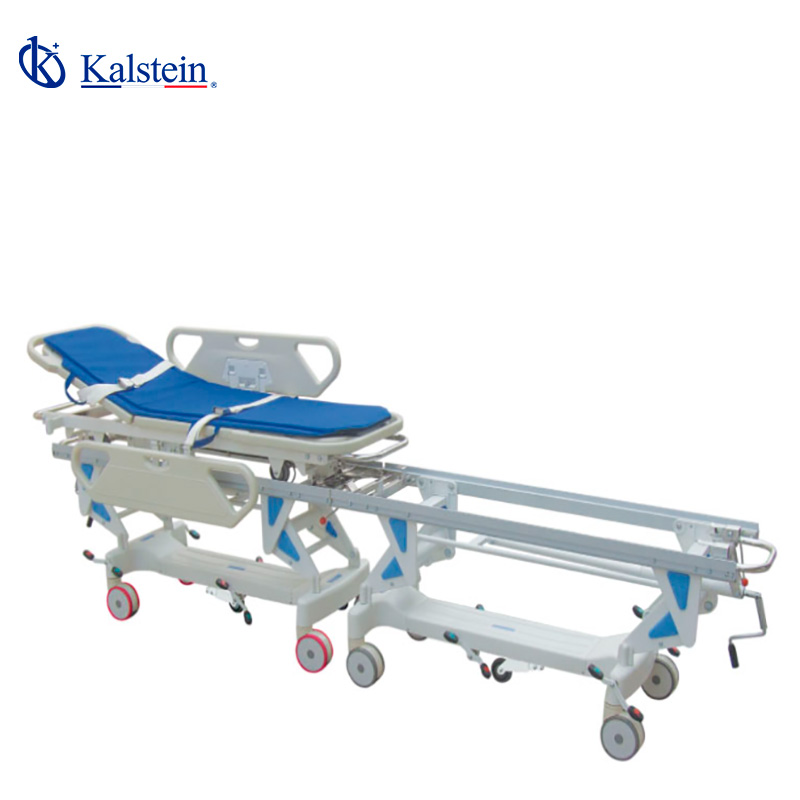Emergency stretchers are essential tools in any medical environment. Among the most reliable and durable is the 304 Stainless Steel Emergency Stretcher, known for its resilience and versatility.
In this detailed guide, we will explore how to maximize the use of this stretcher to achieve the best results, integrating practical tips and step-by-step tutorials.
We understand that you need equipment that delivers maximum value to your laboratory. We invite you to visit https://kalstein.de/category-product/medical-line/medical-transfer-stretcher/, to immerse yourself in our universe of cutting-edge technology equipment. Our prices are competitive and accessible, we combine the convenience of online shopping with the guarantee of an exceptional product. Because you deserve the best, we create and offer top-tier laboratory equipment. Make your choice today, where science comes to life. https://kalstein.de/
Initial Preparation and Setup
Understanding the Characteristics of 304 Stainless Steel
The 304 Stainless Steel Emergency Stretcher stands out for its resistance to corrosion and external agents. This type of steel is highly valued in the medical industry for its durability and ease of maintenance. Before its first use, it is crucial to familiarize yourself with its specific features, including its weight capacity, height adjustments, and mobility mechanisms.
Assembly and Initial Adjustments
Start by ensuring that the stretcher is correctly assembled following the manufacturer’s instructions. Check that all parts are in place and that the adjustment mechanisms function smoothly. Adjust the stretcher’s height according to the needs of the environment and the requirements of the medical staff. Proper adjustment ensures not only patient safety but also the ergonomics of the healthcare personnel.
Safe Patient Transfer
Transfer Techniques
Transferring a patient to the stretcher should be done using proper techniques to avoid injuries to both the patient and medical staff. Always use smooth and coordinated movements. If the patient is mobile, offer assistance and supervision. In cases where the patient cannot move independently, use transfer devices like sliding sheets or transfer boards.
Use of Side Rails and Safety Belts
Side rails and safety belts are crucial for preventing falls during the transfer and transport of the patient. Ensure that the side rails are securely fastened and that the safety belts are well adjusted. These safety elements should be regularly inspected to ensure they are in good condition and functional.
Efficient Mobilization and Transport
Stretcher Maneuverability
The 304 Stainless Steel Emergency Stretcher is designed to be highly maneuverable. Its swivel casters allow for smooth and controlled movement, even in confined spaces. When moving the stretcher, always push from the head end and maintain a constant speed to avoid sudden movements.
Considerations for Transport on Different Terrains
During transport, it is essential to consider the type of surface. On smooth terrains, the stretcher will move easily. However, on uneven or inclined surfaces, additional precautions are necessary. Lock the wheels when needed and use gradual braking on slopes to maintain patient stability.
Maintenance and Cleaning
Cleaning Procedures
Maintaining the stretcher is crucial to ensure its longevity and functionality. After each use, clean the surface with suitable disinfectants for stainless steel. Avoid using abrasive products that could damage the finish. Regular cleaning not only ensures hygiene but also the proper functioning of the mechanisms.
Inspection and Preventive Maintenance
Perform periodic inspections to identify any signs of wear or damage. Check screws, bolts, and other movable components to ensure they are tightly secured. Preventive maintenance, such as lubricating the wheels and checking adjustment systems, will extend the stretcher’s lifespan and ensure its optimal performance.
Staff Training
Importance of Training
Proper training of staff is crucial for the effective use of the emergency stretcher. Organize regular training sessions covering best practices for patient transfer, use of safety systems, and stretcher maintenance. Well-trained staff not only improve patient safety but also operational efficiency.
Simulations and Practice
Incorporate regular simulations and practice sessions into the training. This allows staff to familiarize themselves with the stretcher in controlled situations before facing real emergencies. Simulations are also useful for identifying and correcting potential errors in stretcher use, ensuring the team is prepared for any eventuality.
Advances and Trends in Medical Technology
Integration of Technology in Emergency Stretchers
Medical technology is advancing rapidly, and emergency stretchers are no exception. Currently, there are models that integrate electronic systems for height and angle adjustments, built-in vital signs monitors, and connectivity for real-time data transmission. Keeping up with these innovations can significantly improve the quality of care.
Impact of Recent Medical Research
Advances in medical research also influence the design and functionality of emergency stretchers. Recent studies have led to improvements in ergonomics and patient safety. Adopting the latest trends and technologies in your daily practice not only optimizes patient care but also positions your institution at the forefront of modern medicine.
In conclusion, the 304 Stainless Steel Emergency Stretcher is an indispensable tool in any medical setting. Proper use, maintenance, and updating with the latest technologies ensure not only the safety and well-being of the patient but also the efficiency of the medical staff. By following this detailed guide, you can maximize the benefits of this stretcher and provide high-quality medical care.

